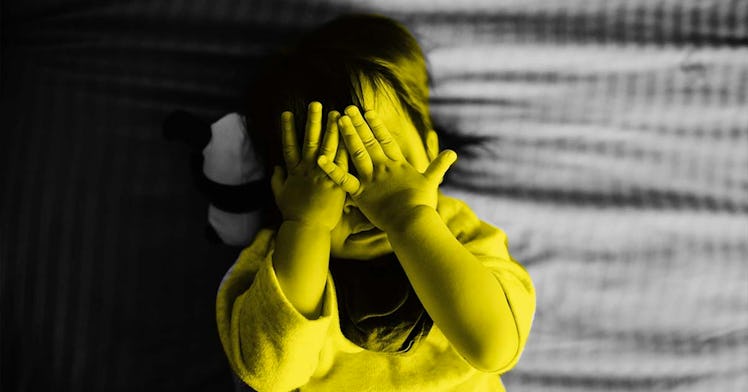Why Is Object Permanence So Important for Babies?
It makes it hard to say goodbye, but developing object permanence provides many opportunities to play with your baby.

For babies, the phrase “out of sight, out of mind” isn’t just a fun colloquialism, it’s literal. That’s because they haven’t developed object permanence — if a baby can’t see an object it basically ceases to exist. So prior to developing object permanence, life is pretty exciting for babies because a parent’s ability to hide things and make them reappear is basically a god-like power. But it doesn’t last, so get the peek-a-boo in early.
What is Object Permanence?
Developmental psychologist Dr. Kimberly Corson explains that object permanence occurs when infants understand that something still exists even when it cannot be seen, heard, or touched. “As an adult, we’ve figured this out. If I put something in my desk drawer, I know it’s there if and when I need it,” she says. “And if it’s not there, I know someone got into my desk drawer when I wasn’t looking. I understand that it didn’t magically disappear when it was out of sight.”
The concept of object permanence originated from Swiss developmental psychologist Jean Piaget’s Theory of Cognitive Development in the 1930s. He believed that infants began developing object permanence at 8 months, but current theorists generally agree that the process begins as early as 4 months. Before that point, infants are moving from a reflexive relationship to their surroundings, to an understanding that objects exist and can be interacted with.
What is an Example of Object Permanence?
The most difficult example of the struggle with object permanence is separation anxiety. Say you drop your toddler off at daycare: While they know you will still exist after you go away, their sense of time isn’t developed enough to know when or if you will come back. They shed tears, you feel sadness or embarrassment, and it’s painful for everyone involved. It’s a natural and necessary development, but that doesn’t make it any easier to experience.
Dr. Corson reminds parents to show themselves compassion. “It’s hard to see your kiddo cry, but remember that separation anxiety is normal, and it’s a good first experience for children to explore and practice coping skills.” She suggests the following ideas for weathering this stage as well as possible:
- Practice separation with games, such as hide and seek or role play with dolls/action figures. Switch roles with your child so that sometimes you are the person who “goes away” and sometimes they do the hiding or “leaving.”
- Create short goodbye rituals like a goodbye song or phrase or special wave, and practice them before you leave your child with another caregiver. Keep the goodbye brief and give them specifics they can understand about when you’ll return (e.g. “after lunch”).
- Create or help your child choose a comfort object, like a blanket, a teddy, or a “hug” that they can keep in their pocket.
Perhaps the most fun, productive and iconic parent-baby activity during object permanence development is playing peek-a-boo. “It definitely lets you see how younger children react when they think you ‘disappear,'” notes Dr. Corson. “It’s also great early language practice for the pragmatics of language, and they’re learning ‘serve and return’ or giving information, waiting for a response, and then responding.”
It’s no wonder that peek-a-boo has retained its title as The Greatest Game Ever for all these years.